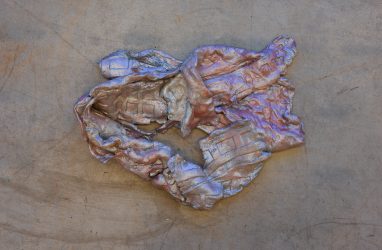 |
Newsletter |
 Hello there, Upon a careful read, one must feel that the opening paragraphs to the newsletter have become almost a playground of ideas surrounding current events, psychometrics, web privacy and the political climate leading to light speculations about its impact to our everyday lives as well as the art scene. Lets shake things up this time and move away from the now for a little while. The current is typically what we have already rationalised, what we can put into a coherent framework and see that nothing flickers unpredictably to cause a disquiet moment, the state of things is stable and even if there is an unsatisfactory element, it is a part of the general structure that explains it. That is the why for something to be relevant is to also to be accepted and acceptable. We say it an “irrelevant argument” in logic when we find that our opponent (the other person talking) said something that leaps from the current discussion to a different territory, it does not make sense in the semantic structure of that discussion (I said I wouldn’t… anyway, Kellyanne Conway is said to be good at this). In another context, we stress that something is relevant when we feel it fits the current state of things, actually, maybe even excels at the current state of things (“oh yeah, this exhibition is so relevant”). This is why for the weird and the eerie to come into our current, relevant, acceptable horizon is paradoxically difficult. We tell ourselves we seek to imagine and to find something new but we talk about and praise the relevant. The eerie moment happens when we’re confronted with, for example, Stonehenge or Easter Islands relics and we cannot grasp the belief system that made sense out of these relics, made the meaningful. This means, to be truly open to the new, is to experience the weirdness of our own reality: how normative the tastes we present each other are and how the rationalisations we employ to explain it could be(come) obsolete. Of course, this paragraph is a homage and a spin off the ideas of late Mark Fisher presented in his last book. And now, we have to go back to what’s current. We’re excited to announce the residency programme Open Call for the 2nd half of 2017. Additionally, there are stipends for artists from the Baltic-Nordic region researching alternative education strategies and methods in arts. Find out more here and don’t miss the deadline! By the way, we know it was a wait from the few emails asking us “when??”, but I am happy to tell you we are prepared to announce the alternative education open calls next week as well! Among other things, we’re very eager to present this year’s alternative education programme schedule, tutors and focus. Don’t forget to look us up on Facebook, Instagram and check the recently refined website occasionally too. that’s that for now, 
In residence
Jenine MarshJenine Marsh (CA) – is an artist based in Toronto Canada whose work animates surface as a social and sculptural concern. At RUPERT she will improvised methods of pressing and casting to consider the plurality belonging to contact. 
In residence
James LewisJames Lewis (UK) lives and works in Vienna. While at Rupert, Lewis will be developing a series of works that function like a theatre prop – they conjure a scene, an atmosphere, a staging. He is interested in the traces that images or ideas leave, like an after-image that tingles the retina even after the stimulus is gone. |

Open Call for residencies
Residencies at Rupert, Autumn-Winter 2017We are excited to announce Rupert Residency Programme Open Call for 2nd half of 2017. Head over to our website to find more info and the application form. Don’t forget the deadline to send in your application is midnight 26 March, 2017. 
Open Studios
Thursday, 23 February, 5 pm., Vaidilutės str. 79 James Lewis & Jenine Marsh - "Can’t you hear my voices?"On 23 February, Rupert kindly invited the public to current residents James Lewis and Jenine Marsh open studios in Pakrantė gallery space (Vaidilutės g. 79). Read more here and please check out the photo documentation. February residencies are kindly supported by Ministry of Culture of the Republic of Lithuania and The Lithuanian Council for Culture. 
In residence
Anna-Bella PappAnna-Bella Papp (RO) is an Antwerp (BE) based artist working mainly with clay; who draws her inspirationfrom her immediate surroundings. At Rupert Anna will research art’s place in our lives. The acquired or revealed value of works of art in relation to the space they occupy. |
